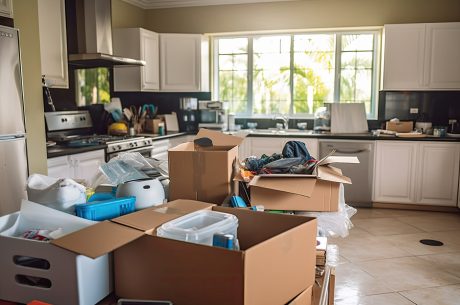Each year, more than 430 Americans die from unintentional CO poisoning, and over 50,000 visit the emergency room due to carbon monoxide (CO) poisoning, according to the Centers for Disease Control and Prevention (CDC). Also, fatality is highest among Americans 65 and older. Preventing CO poisoning requires proper maintenance of fuel-burning appliances and CO alarms. Learn how to prevent carbon monoxide poisoning below.
What is carbon monoxide (CO)?
- CO is an odorless, tasteless, and colorless gas. It can cause severe health problems and even death to unsuspecting people in their homes.
- This deadly gas exists in combustion fumes that result from burning fuel (gas, wood, propane, etc.) in various appliances and machines. Those include stoves, fireplaces, gas ranges, lawnmowers, electric generators, cars, and more.
- CO from these sources can build up in enclosed or semi-enclosed spaces. Breathing in CO can poison people and animals.
How CO affects your health
As CO is relatively undetectable to the human senses, people may not know they are being exposed. The initial low to moderate CO poisoning symptoms are similar to the flu (but without the fever). They include headache, fatigue, shortness of breath, nausea, and dizziness. High levels of CO inhalation can cause mental confusion, vomiting, loss of muscular coordination, loss of consciousness, and ultimately death.
Symptom severity is related to both the CO level and the duration of exposure. Unless suspected, CO poisoning can be difficult to diagnose because the symptoms mimic other illnesses. People who are sleeping or intoxicated can die from CO poisoning before ever experiencing symptoms. That’s why learning how to prevent carbon monoxide poisoning is so important.
How does CO poisoning work? Red blood cells pick up CO quicker than they pick up oxygen. If there is a lot of CO in the air, the body may replace oxygen in blood with CO. This blocks oxygen from getting into the body, damaging tissues and resulting in death. CO can also combine with proteins in tissues, destroying the tissues and causing injury and death.
All people and animals are at risk for CO poisoning. However, unborn babies, infants, and people with chronic heart disease, anemia, or respiratory problems are more susceptible to its effects.
Preventing CO poisoning requires proper maintenance of fuel-burning appliances and CO alarms. Learn CO prevention tips below.
How to prevent carbon monoxide poisoning
- Have your heating system, water heater, and any other gas, oil, or coal-burning appliances inspected and/or serviced at least once a year by a certified professional.
- Never use gas ranges or ovens to heat your home. Also, don’t use gas camp stoves or charcoal grills indoors. Using these can cause a buildup of CO inside your home, cabin, or camper.
- Don’t use portable flameless chemical heaters (catalytic) indoors. Although these heaters don’t have a flame, they burn gas and can cause CO to build up in your home.
- Be careful when using gas-powered electric generators. Never use them in your home, basement or garage, and keep them at least 20 feet from windows, vents or doors.
- When buying gas equipment, be sure to check for the seal of a national testing agency like Underwriter’s Laboratories.
- Make sure to vent gas appliances properly:
- Indoor vent pipes should go up slightly as they go toward the outdoors. Doing this will help prevent CO or other gases from leaking if the joints or pipes are not adequately tightened or affixed.
- Never patch a vent pipe with tape, gum, or anything else. This kind of patch can make CO build up in your home.
- Keep the vents for the stove, fireplace, dryer, and furnace clear of snow during and after a snowstorm.
- Have your chimney checked for soot, debris, and corrosion at least once a year. Hire a chimney sweep to clean your chimney annually.
- When the fireplace is in use, open the flues. Close your fireplace or damper only when the fire is completely out.
- Never idle your vehicle inside a garage that’s attached to the house or living space, even if you leave the door open. Have a mechanic inspect your vehicle’s exhaust system once a year to prevent CO build-up.
- If you drive a vehicle with a tailgate — when opening the tailgate, open vents or windows to make sure the air is moving through your car. If only the tailgate is open, CO from the exhaust will pull into the car.
- Install CO alarms in your home — see more details below.
Tips for using CO alarms
Carbon monoxide can be safely detected in your home only by CO detectors. Therefore, it is important that you properly install and maintain your CO alarms and know what to do when one sounds.
Purchasing Tips
- Purchase CO alarms from a trusted retailer. Choose alarms that are battery-operated or have batteries as a backup.
- Make sure CO alarms bear the label of a nationally recognized testing laboratory.
- Get portable carbon monoxide alarms for when you’re traveling.
Installation Tips
- Install CO detectors on every level in your home, as well as in other locations required by law, standards, or codes.
- Follow the manufacturer’s instructions for proper installation.
- Make sure objects like furniture parts or drapery don’t cover the alarm.
- Interconnect CO alarms to provide the best protection. When one sounds, they all do.
- Install both CO alarms and smoke alarms in your home. You can also find combination smoke and carbon monoxide detectors.
Maintenance Tips
- Test CO alarms once a month by pressing the test button to ensure they work properly. Tell everyone in your household that you will be performing the test.
- Replace CO alarm batteries at least once a year. A good time to change the batteries is when Daylight Savings Time ends and begins. Also, replace batteries if the audible trouble signal sounds to indicate low batteries.
- Replace your CO alarms once every ten (10) years, but make sure to check the manufacturer’s instructions first. Each CO alarm has a different lifespan.
What to do in case of CO poisoning
- If your CO alarm goes off and no one is experiencing CO poisoning symptoms (headache, weakness, dizziness, upset stomach, vomiting, chest pain, and confusion), open all windows and turn off fuel-burning appliances.
- Have a certified technician inspect and fix the problem as soon as possible.
- Do not go back into the building until emergency services personnel gives you the all-clear.
- In case someone is experiencing CO poisoning, call 911 immediately and get him/her to a hospital.
For professional fire damage restoration services, contact PuroClean!
Remember that all people and animals are at risk for CO poisoning, so don’t take any risks! Be cautious; be safe! Follow these tips on how to prevent carbon monoxide poisoning or to reduce those risks. For fire damage restoration and smoke cleanup services, call your local PuroClean office now.




